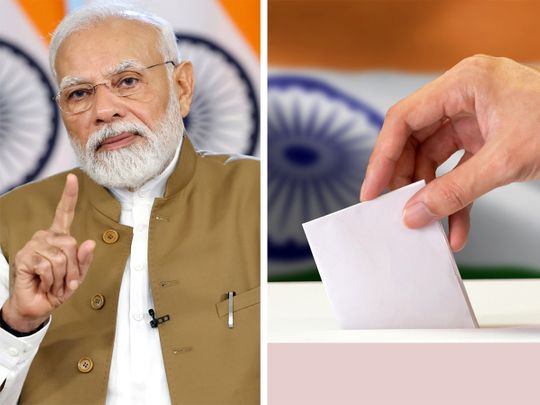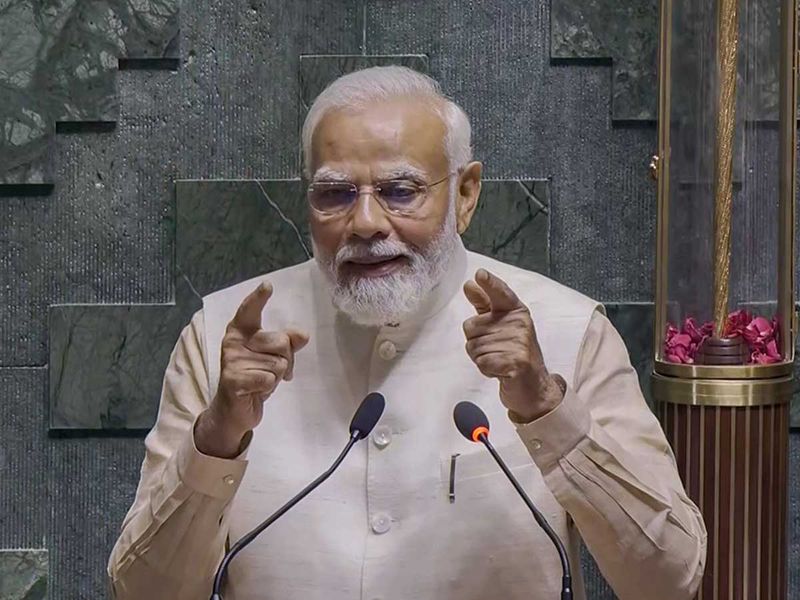
What is the “One Nation, One Election” (ONOE) proposal currently making headline news in India? Simply speaking, it is the proposition that both central and state elections be held simultaneously. If implemented, India would go to the polls only once in five years.
After which both those elected to rule in Delhi and in India’s twenty-eight states and eight Union Territories can just go about the business of governing the country. After all, that is what they are elected for, rather than worrying about staying in power or fighting the next poll.
The Narendra Modi helmed central government has formed a high-level committee on Sep. 1 under the chairmanship of former President of India, Ram Nath Kovind, to examine the feasibility of ONOE. Kovind is a distinguished lawyer, former governor of Bihar, and parliamentarian, in addition to having served as India’s 14th President.
His committee’s recommendations are expected to be tabled in special session of Parliament convened from 18-22 September, which will also serve to inaugurate the newly constructed Parliament building.
Opposition is in a tizzy
Added significance is being read into this session because it will start a day after the prime minister’s 73rd birthday and coincide with the hugely popular festival of Ganesh Utsav.
Naturally, the opposition is in a tizzy. They have already started criticising the ONOE idea, fearing that a charismatic and popular leader like Modi might help the ruling Bharatiya Janata Party (BJP) sweep both the central and state elections.
That would practically spell the doom of many regional parties, which are fundamentally akin to family-owned corporations, controlling huge amounts of money. Indeed, to safeguard and perpetuate their wealth and power is why generation after generation continues to enter politics.
Modi wants to end this dynasticism and the attendant wealth-accumulation, much of which is by illegal or immoral means. That is why he is pushing for ONOE.
Root of corruption
Modi knows that the root of corruption in India is the contamination by big money of the electoral system. Indian elections are reputed to be the costliest in the world. Some estimates put the expenses of general elections as high as $10 billion.
Not because the Election Commission, the government machinery, or the law enforcement agencies cost the exchequer astronomical amounts. It is the political parties in the fray and their candidates who have to fund and finance their bid to power who spend most of the moolah.
Where do parties and candidates get their money — and how to they pay back those who bankroll them? That, in a nutshell, is the unholy nexus between wealth and power which eats into the nation’s precious resources, which can be devoted to development.
In the heat of the arguments flying thick and fast on both sides, we often tend to forget that ONOE is not a new idea. India’s first elections in 1952, after the Constitution came into force on Jan. 26, 1950, both to the Lok Sabha and the State Assemblies, were held simultaneously.
This practice persisted for another twenty-two years, through three subsequent elections in 1957, 1962, and 1967. If so, how did it come to be discontinued? First of all, there were unforeseen disruptions, as when then Prime Minister Jawaharlal Nehru, dismissed in 1959 the Communist government of Kerala led by EMS Namboodripad, by invoking provisions of Article 356 of the Constitution.

Defections and counter-defections
Subsequently, with the reorganisation of states and the creation of new ones, the practice had to be discontinued. Moreover, defections and counter-defections among political parties brought down many an elected government, forcing polls to be held on separate dates or prematurely.
Currently, only Arunachal Pradesh, Sikkim, Andhra Pradesh, and Odisha conduct their assembly polls concurrently with Lok Sabha elections.
Not only is ONOE not a new idea, but attempts to revive it have also been afoot for several years. In the 1983 annual report of the Election Commission, ONOE was recommended. Again, in 1999, the Law Commission report revived the idea.
After Modi became India’s prime minister in 2014, ONOE was, once again, brought out of cold storage. The ruling BJP made several, albeit intermittent, attempts to make a strong pitch to revive it. In 2018, the Law Commission tabled a report advocating ONOE. It highlighted both the legal and constitutional requirements needed to implement it.
It is estimated that not a single year goes by in India without an election being held in some part or the other of the country. The model code of conduct is enforced by the Election Commission the day the election schedule is announced, which means government spending on development, as also major decisions, comes to a standstill.
Streamlined and curtailed process
How can a country and its political parties by in election mode all the time? If they are constantly watching their backs, when will they do their job? How much the country would benefit if the entire process were streamlined and curtailed to once in five years.
While all these arguments make sense, the opposition parties are in no mood to play ball. ONOE would imply that several states would have to truncate or extend their elected terms in office. Non-BJP ruled states are not likely to cooperate. According to the Law Commission report, ONOE would also need a constitutional amendment, although other experts disagree.
There is also the objection that ONOE would strike yet another blow to federalism, which is enshrined in the Constitution, by clubbing the electoral prospects of the central government with that of the state governments.
Of course, the counterargument is that nothing prevents voters from voting differently, as they are frequently wont to, when it comes to choosing their representatives at the Centre vs the states.
It remains to be seen if ONOE will actually be implemented, but it does seem like an idea whose time has come.









